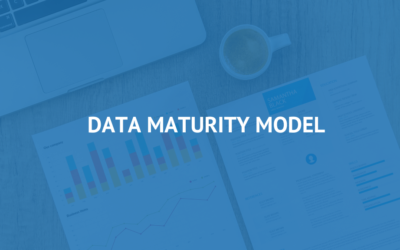Demand Forecasting Using AI and Machine Learning
What is demand forecasting
Demand forecasting is a significant application in the field of AI for all the businesses either it be retail or banking. In a study conducted by BCG and Google, the result shows AI advanced analytics in forecasting can help businesses achieve 10% higher revenue. Among all, demand forecasting is of utmost importance for a business growth and to lead the business at top.
Demand forecasting can help companies with business insights from the past data that can predict the demand of the market, it can include inventory, marketing needs, customer behavior. Business can understand the customer needs and thus based on forecasting can bring the right product when required. This can give customers a feeling of ease and enjoyment. Without a proper forecasting, unnecessary inventory or lack of inventory can affect the business sales.
Too much inventory can lead to a waste of products. With the digital world the trend often gets changed. Change in price of raw material and finished products often change. For Eatables proper inventory is utmost. Demand forecasting can save businesses from such economic loss.
Insufficient inventory Another issue can be insufficient inventory, when there is a demand in the market there should be an equivalent supplier to fulfill the demands. Due to lack of inventory customers can turn to competitors which will again lead to business loss.
Demand forecasting: is the use of historical data and insights to estimate the demand of goods and service in the current period or any specific period. A good demand forecasting algorithm can help business with economic and financial growth along with stability.
Talking about retailers they just want to focus on how to manage the demand rather than how the demand forecast is being done. Just as we don’t need to understand the working principle of a car engine, but only need to drive the car to the destination while the engine is working, what we need to think about here is what kind of business improvement a more accurate forecast can bring.
Thus, having highly accurate forecasting methods can help in improving business efficiency and achieve greater success in business practices.
The importance of demand forecasting
Businesses should understand whether technology or investment is not only important to them but also help them with business growth. How demand forecasting promotes business growth, we boil it down to two points: reducing costs and improving efficiency, and enhancing customer experience
1. Cost reduction and efficiency improvement
In today’s increasingly fierce market competition, the era of brutal and explosive growth in all walks of life is gradually gone. Refined operation, cost reduction and efficiency improvement are the general trend, and it is even more important for the retail industry whose gross profit margin itself is not very high. The top priority.
During an hypothetical analysis on the sales data of a supermarket it was found that even a 1% reduction in cost of goods can increase the net profit by 5% to 6%. Tempting right! Almost all retail businesses are looking to find ways that can help them reduce cost and maximize profits.
Demand forecasting can help retail business to reduce cost in following ways –
- Through accurate demand forecasts, reduce unnecessary inventory capital occupation. Less inventory will result in lower warehousing cost.
- Demand forecasting can also help in marketing and advertising. Based on current market trends the decision can be made whether sales targets can be achieved timely or any marketing is required to increase the sales.
2. Enhance customer experience
Good customer experience can assure loyalty of customers and also bring a good reputation to the business. The most obvious is this: Avoid leaving customers empty-handed, or pushing your competitors to buy similar products, this is one of the most effective ways to please customers. For most retail companies, you don’t want customers to be full, but due to insufficient salesperson allocation, the customer’s consumption experience is degraded. You regret losing customers, right?
Demand forecasting method
According to the technical means of forecasting, demand forecasting can be divided into:
- Qualitative prediction
- Quantitative prediction
1. Qualitative prediction
Qualitative forecasting refers to: the company forecasts demand based on some qualitative data.
This requires that the forecaster is familiar with business knowledge, has rich industry experience and comprehensive analysis capabilities, and uses personal experience and analytical judgment based on the historical data and intuitive materials that have been mastered to make qualitative and degree of future development of things. judgment.
Although we also require qualitative forecasting to use mathematical methods to quantitatively make forecast assessments to a certain extent, it is still vulnerable to the subjective factors of forecasters.
Qualitative forecasting is suitable for demand forecasting in scenarios such as enterprises with limited historical data, new store openings, new product launches (especially when there are no other similar products in the market for reference).
There are also very few algorithms that can be applied to qualitative forecasting, which is more like the field of expertise of industry experts or consulting companies.
- Delphi method –
The Delphi method is a method of judging and predicting the research problem based on the direct experience of a person with specialized knowledge, and it is a method of expert investigation . He was first used in the forecasting field by the American Rand Corporation in 1964. The Delphi method has the characteristics of feedback, anonymity and statistics. Choosing the right expert is the key link to make a good Delphi forecast.
- Historical life-cycle analogy –
Historical analogy analyzes the historical life cycle and demand of similar products to conclude a pattern which can then help in a launch of a new similar product. This method assumes two phenomena for example, choosing a look alike product and understanding the sales pattern of it, and using its reference for the new product.
- Subjective probability
Subjective probability is the probability estimated by people based on experience or premonition. It is different from objective probability, which is a probability based on the objectivity of event development . In many cases, people have no way to calculate the objective probability of events, so they can only use subjective probability to describe the probability of an event.
- Leading Indicators Method
The leading indicator method is to divide economic indicators into leading indicators, synchronized indicators and lagging indicators, and analyze and forecast based on the relationship between these three types of indicators. The leading indicator method can not only predict the development trend of the economy, but also predict its turning point.
- Plant Director (Manager) Judging Opinion Method
The factory director (manager) judgement method is that the person in charge of the enterprise gathers various responsible persons related to the market or familiar with the market situation and the heads of middle management departments to let them know about the future market development situation or a certain kind of Express opinions and make judgments on big market issues; then, aggregate various opinions for analysis, research and comprehensive processing; finally, the market forecast results are obtained.
- Salesman estimation method
The salesperson estimation method is to integrate the estimated values of different salespersons as the predicted result value. Since sales staff are generally familiar with market conditions, this method has some significant advantages.
- Interaction Method
The method of mutual influence is to analyze the changes caused by the mutual influence between various events and the probability of the changes to study the possibility of each event in the future.
- Scenario prediction
Scenario forecasting method is a new method to predict, because it is not subject to any conditions, the application of flexibility and can fully mobilize the imagination forecasters consider more comprehensive, beneficial decisions are more objective decision-making, in the formulation of economic policy , Company strategy and other aspects have good applications. The same prediction theme may be very different in the final scenario when the environment is different.
2. Quantitative forecasting
- Weighted arithmetic average method –
The average calculated with various weights is called the weighted arithmetic average . It can be a natural number or the number of occurrences of an item as a weight. The average value obtained is the measured value.
- Trend average prediction method –
The trend average forecasting method is based on the actual number that occurred in the past, and on the basis of the arithmetic average, it is assumed that the value of the future period is the direct continuation of its recent value, and a prediction method that has a smaller relationship with the value of the distant period.
- Exponential smoothing method –
Exponential smoothing is a method in which the past change trend of an indicator itself is used as a basis for predicting the future. When predicting the future, consider that the impact of recent data should be greater than that of the long-term. Therefore, different weights are used for data in different periods. The more recent data, the greater the weight, and vice versa.
- Unary linear regression prediction method
According to the existing data of x and y, seek reasonable regression coefficients of a and b to obtain a straight line of change and minimize the distance between each point on the line and the corresponding point on the actual data. Suppose the linear equation of change is: y=a+bx
- High and low point method –
The high-low point method is to use the algebraic formula y=a+bx to select the difference △y between the total cost (or total cost) of the highest business volume and the lowest business volume in certain historical data, and compare it with the difference △x between the two business volumes. How to find b and then a.
- Time series forecasting method –
It uses a series of time as an independent variable to determine the linear equation y=a+bx, and then calculates the values of a and b. This is a special formula for regression prediction.
Application scenarios of demand forecasting
Earlier, we more or less mentioned some scenarios for demand forecasting. Here, is a simple summary.
1. Reduce the amount of inventory
For retail companies with high inventory costs, sales forecasts are used to guide purchases and inventory, and on the premise of ensuring supply, further reduce the amount of inventory and reduce costs.
2. Reduce the risk of scrap
Commodities with short spans of time like fruits, bread, fresh food needs accurate forecasts. Accurate forecasts can help with stocks, reduce scrap rate and save cost as well.
3. Seize sales opportunities
Sales forecast during festivals, weather change, season sales needs accurate sales which can forecast required stocks in advance to make use of sales opportunities on time.
4. Guide production scheduling and distribution
Production and distribution also requires forecasting. Accurate sales forecasts can guide in scheduling of production and logistics.
5. Guide staff allocation, optimize shift scheduling
During seasons, it is important to forecast the labor, staff, inventory. Forecast can help businesses to predict about all the resources required during the seasons to maintain growth and profit in business.
6. Anticipate customer needs
Through qualitative forecasts such as market surveys and expert opinions, or causal model forecasts based on marketing activities, we can predict the products and quantities demanded by customers and tap the potential of customers’ consumption.
7. Measure the business
Through the quantitative evaluation of the store’s vertical and horizontal multiple indicators, the store’s business conditions are measured, and guiding suggestions and development goals are given.
8. Assess the progress of sales targets
Predictive analysis can help to predict the sales expectation during any event or season. The progress and quality of completion of sales targets can be evaluated based on predictive analysis.
9. Enhance customer experience
Through the forecast of each link of invoicing, sales and inventory, the customer experience is enhanced, and the decline in customer consumption experience caused by shortages, delayed delivery, and delayed delivery can be avoided.





